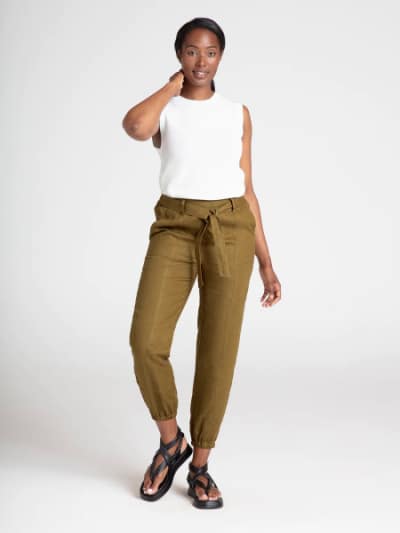Best News To Deciding On Bamboo Clothes
Wiki Article
What Are The Environmental Advantages Of Hemp Clothing That Is Low-Impact?
Low impact hemp clothing is more environmentally friendly than clothing made out of synthetic fibers. Hemp clothing is environmentally friendly. Hemp is fast growing and requires less water, pesticides, and herbicides than many other plants. Hemp thrives in a wide range of conditions and soil types. This helps reduce the use of chemicals used in agriculture.
Hemp uses less water when compared to cotton. Cotton is well-known for its excessive use of water. Hemp is a water-efficient option for the production of clothing.
Hemp is often produced without the use of synthetic pesticides. Pesticides are not required. This can help reduce the environmental impact that comes with chemical farming.
Hemp plantation can enhance soil health by preventing compaction and erosion. The soil is in a better state for future growth.
Biodegradability Biodegradability Hemp fibers degrade and biodegrade naturally over time. This helps reduce the environmental burden from textile waste. Contrary to synthetic fibers such as polyester which can require thousands, or even hundreds of years to degrade.
Lower Carbon Footprint: The production of hemp fibers generally has a smaller carbon footprint when compared to synthetic materials. Hemp is also a carbon sink since it absorbs CO2 from the atmosphere as it is growing.
Hemp clothing is known to be durable and lasts for a long time. Good quality hemp clothes will last for years. This means that you won't have to replace them as often and reduce consumption.
Hemp plants possess natural pest resistance, which reduces the use of chemical pest control.
Hemp offers a broad range of applications in textiles, like clothing, accessories, bags and many more. This makes it an eco-friendly and versatile choice for fashion and textiles.
Regenerative Agriculture - Certain sustainable farming practices use hemp in regenerative agricultural systems which seek to improve ecosystems and improve their functioning while also producing crops. This has positive environmental benefits.
While hemp has many environmental benefits, its overall sustainability is impacted by other factors like transport, dyeing process and consumer behavior. Additionally, just like in any other industry the standards of production and methods can vary. To ensure that you're getting the greatest environmental benefit, look for organic hemp clothing that is sustainable and organic. Take a look at the top rated related site on hemp clothes for website advice including hemp clothing womens, hemp coat, hemp tank top, hemp jacket, patagonia hemp work pants, hemp fleece fabric, hemp shirts mens, organic hemp hoodie, hemp swimsuit, hemp shorts mens and more.

How Can Hemp Be Used To Improve The Carbon Sequestration Process And Sustainably?
Hemp fibers are a great source of carbon sequestration, sustainability and crops rotation in many ways which makes them an eco friendly choice for both agriculture and textile production Carbon Sequestration-
Hemp is a very fast-growing plant. It matures in as little as 70-120 days dependent on the variety of the plant and the environment. During the rapid growth phase hemp plants are able to absorb carbon dioxide (CO2) from the atmosphere in order to photosynthesis. Carbon uptake is an important contribution to carbon sequestration as well as decreasing CO2 emissions from the air.
Biomass Production Hemp is renowned for its high biomass production. The dense leaves of the plant as well as its tall stalks produce an enormous amount of organic matter. If the biomass is put into soil or used in various applications, this could contribute to the growth of organic matter and carbon.
Sustainability:
Hemp requires fewer synthetic pesticides, herbicides, and herbicides than other crops like cotton. Its natural resistance decreases its need for chemical interventions. The organic hemp cultivation, specifically, emphasizes sustainability by eliminating synthetic chemicals completely.
Hemp has an excellent water-efficiency, especially when compared with water-intensive crops such as conventional cotton. This makes it more durable in areas with limited water resources.
Hemp roots are deep and may assist in improving the soil's quality. Its roots deep can lower runoff through stabilizing soil and improving soil structure. Hemp farming can increase soil microbial activities, improving the fertility of soils and the cycle of nutrient.
Hemp can be easily integrated into rotation systems. The practice of crop rotation is to alternate different crops in the same field over time. This method helps break cycles of disease and pests and reduce soil loss and improve soil structure. The contribution of hemp to rotational farming helps to sustain agricultural practices.
Crop Rotation
Hemp can be incorporated into system of rotation for crops alongside other crops like legumes, grains, or vegetables. Diversification assists farmers in maintaining soil health and decrease diseases and pests. It also aids in balancing nutrient cycles.
Hemp’s deep-rooted roots can penetrate soils and help aerate them, reducing compaction. It also increases water infiltration. A better soil structure can be a benefit to subsequent crops following hemp.
In summary, hemp fibres improve the storage of carbon, sustainability and crop rotation practices due to their rapid expansion and production of biomass. Additionally, they require less chemical inputs, make good utilization of water, and can be used in conjunction with crop rotation systems. The hemp fibers produced by this sustainable, regenerative farming practice are a great option for textiles. Follow the most popular hemp clothes for website info including hemp sweatshirt, patagonia hemp jacket, hemp shorts mens, hemp work pants, 100 hemp clothing, hemp sweater, wholesale hemp fabric, organic hemp underwear, american made hemp clothing, patagonia hemp jacket and more.

What Are The Advantages Of Wearing Bamboo Clothing For Wellbeing And For The Environment.
Bamboo clothing can be ecologically friendly and comfortable.
Softness Bamboo fabric is well-known for its extraordinary softness. It has a soft velvety texture that is comfortable to wear. Bamboo clothing is well-known because of its luxurious softness which makes it an excellent option for activewear, loungewear and intimate apparel.
Bamboo fibers have a natural capacity to absorb moisture and are breathable. The micro-gaps of the fabric permit air to flow to keep you cool and cool in hot weather. The moisture-wicking qualities help to draw sweat away from your body, reducing dampness.
Bamboo clothing is ideal for thermoregulation. It can help keep you warm by capturing the heat near your body. Conversely, it can help keep you cool in hot temperatures by allowing excess moisture and heat to escape. The ability to adapt to various temperatures can make bamboo clothing suitable for year-round wear.
Hypoallergenic Bamboo fabric is naturally hypoallergenic. It is also gentle on skin that is sensitive. Bamboo is less prone to cause irritation or allergic reactions.
Bamboo fibers are naturally antimicrobial substances that aid in preventing the growth and spread of bacteria that cause odor. This makes bamboo clothing staying fresh even when it is worn in the midst of physical exercise.
Environment-
Bamboo is sustainable- It is a sustainable and renewable resource. It is one of the fastest-growing species and requires minimal water. No pesticides, herbicides or other chemicals are required for the cultivation of bamboo. Bamboo is harvested without harming it as its root system regenerates.
Bamboo is water-efficient and has a low consumption. Bamboo can thrive with very little irrigation and is often grown by rainwater alone. This reduces the environmental impact that comes from the use of water for agriculture.
Biodegradability. Bamboo clothes are biodegradable. They naturally break down with time. This property helps reduce the amount of non-biodegradable fabric material that ends up in landfills.
Carbon Sequestration- Bamboo plants absorb carbon dioxide (CO2) from the atmosphere during their fast expansion. Bamboo cultivation can be a carbon-sink that could help in mitigating the effects of climate change through reducing greenhouse gases.
Chemical Reduction - The manufacture and processing of bamboo textiles typically require less chemicals than other types of textiles. This can help reduce the impact on the environment that the manufacturing of textiles has.
Closed-Loop Process- Some bamboo fabric processes are closed loop which recycles water as well as chemical waste, and minimizes pollution and waste.
It is important to be aware that the impact of your actions on the environment on bamboo clothing will vary according to whether it's made from sustainable and ethically managed bamboo forest. For the best environmental results buyers should opt for bamboo clothes made using eco-friendly and ethical practices. Follow the top helpful resource for bamboo clothes for blog info including bamboo sweatshirt, boody bamboo underwear, freefly hoodie, bamboo jeans, clothes made from bamboo fiber, bamboo clothing underwear, checkered bamboo pajamas, preemie bamboo pajamas, bamboo brand jeans, bamboo undergarments and more.
